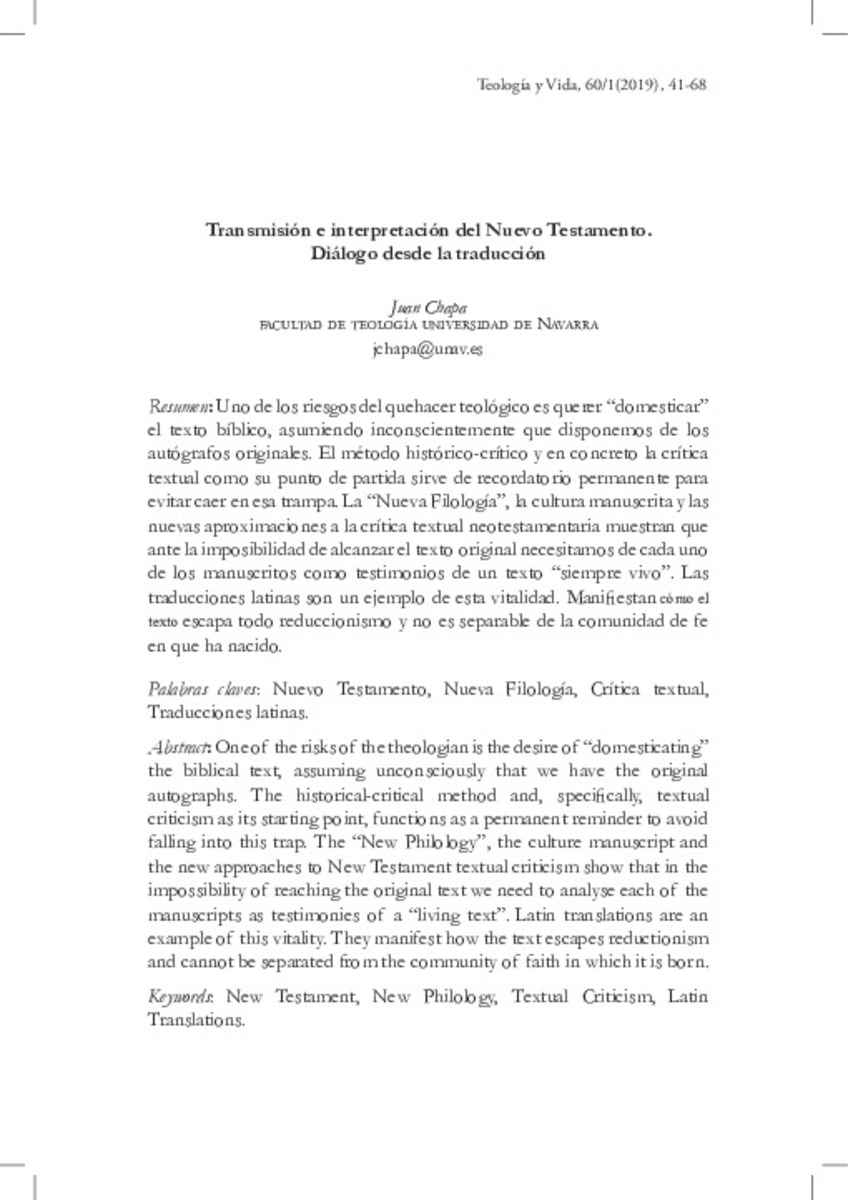Transmisión e interpretación del Nuevo Testamento. Diálogo desde la traducción
Palabras clave :
Nuevo Testamento
Nueva Filología
Crítica textual
Traducciones latinas
New Testament
New Philology
Textual Criticism
Latin Translations
Fecha de publicación :
2019
Editorial :
Facultad de Teología de la Pontificia Universidad Católica de Chile
Nota:
This is an Open Access article distributed under the terms of the Creative Commons Attribution Non-Commercial License, which permits unrestricted non-commercial use, distribution, and reproduction in any medium, provided the original work is properly cited.
Cita:
Chapa, J. (Juan). "Transmisión e interpretación del Nuevo Testamento. Diálogo desde la traducción". Teología y vida. 60 (1), 2019, 41 - 68
Aparece en las colecciones:
Estadísticas e impacto
0 citas en

Los ítems de Dadun están protegidos por copyright, con todos los derechos reservados, a menos que se indique lo contrario.







